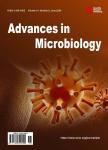Cyanobacteria from Extreme Deserts to Space
Cyanobacteria from Extreme Deserts to Space作者机构:不详
出 版 物:《Advances in Microbiology》 (微生物学(英文))
年 卷 期:2013年第3卷第6期
页 面:80-86页
学科分类:1002[医学-临床医学] 100214[医学-肿瘤学] 10[医学]
主 题:Astrobiology Cyanobacteria Extremophiles Space Exploration Mars Analogues
摘 要:The development of space technology makes the exposure of organisms and molecules to the space environment possible by using the ESA Biopan and Expose facilities and NASA nanosatellites;the aim is to decipher the origin, evolution and distribution of life on Earth and in the Universe. The study of microbial communities thriving in lithic habitats in cold and hot deserts is gathering appreciation when dealing with the limits of life as we know it, the identification of biosignatures for searching life beyond Earth and the validation of the (litho)-Panspermia theory. Cyanobacteria of the genus Chroococcidiopsis dominate rock-dwelling communities in extreme deserts that are considered terrestrial analogues of Mars, like the Dry Valleys in Antarctica, the Atacama Desert in Chile or the Mojave Desert in California. The extraordinary tolerance of these cyanobacteria towards desiccation, ionizing and UV radiation makes them suitable experimental strains which have been already used in astrobiological experiments and already selected for future space missions. Evidence gained so far supports the use of desert cyanobacteria to develop life support systems and insitu resource utilization for the human space exploration and settlement on the Moon or Mars.



